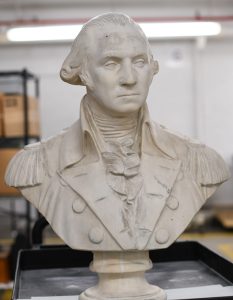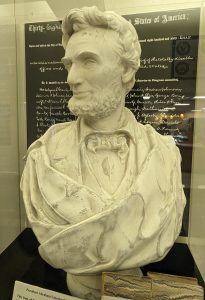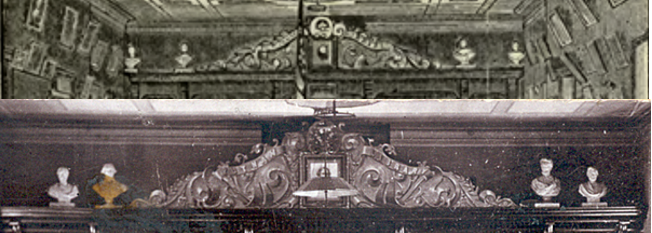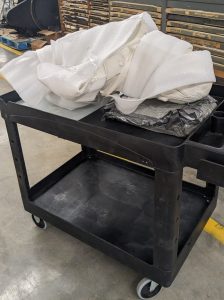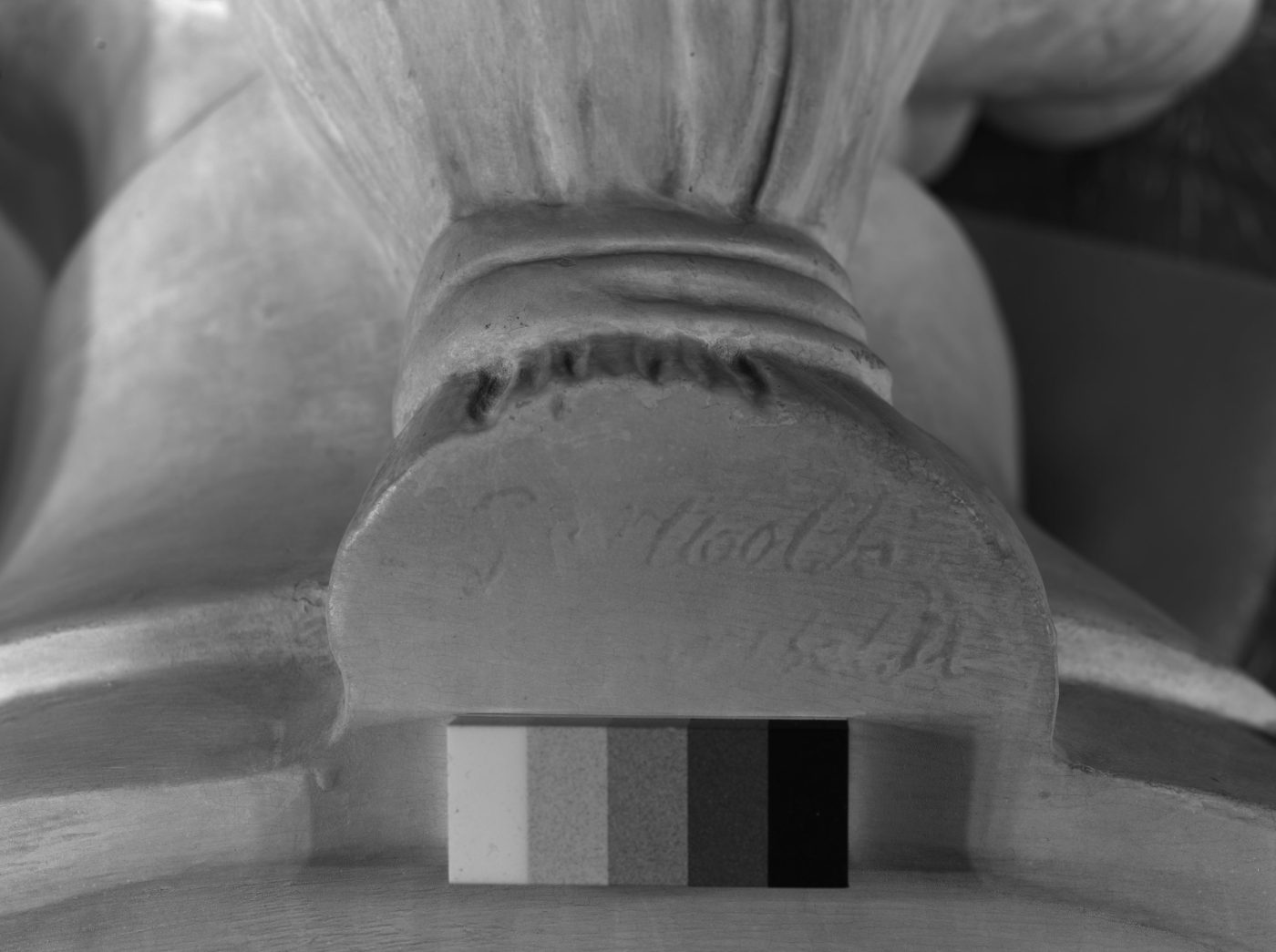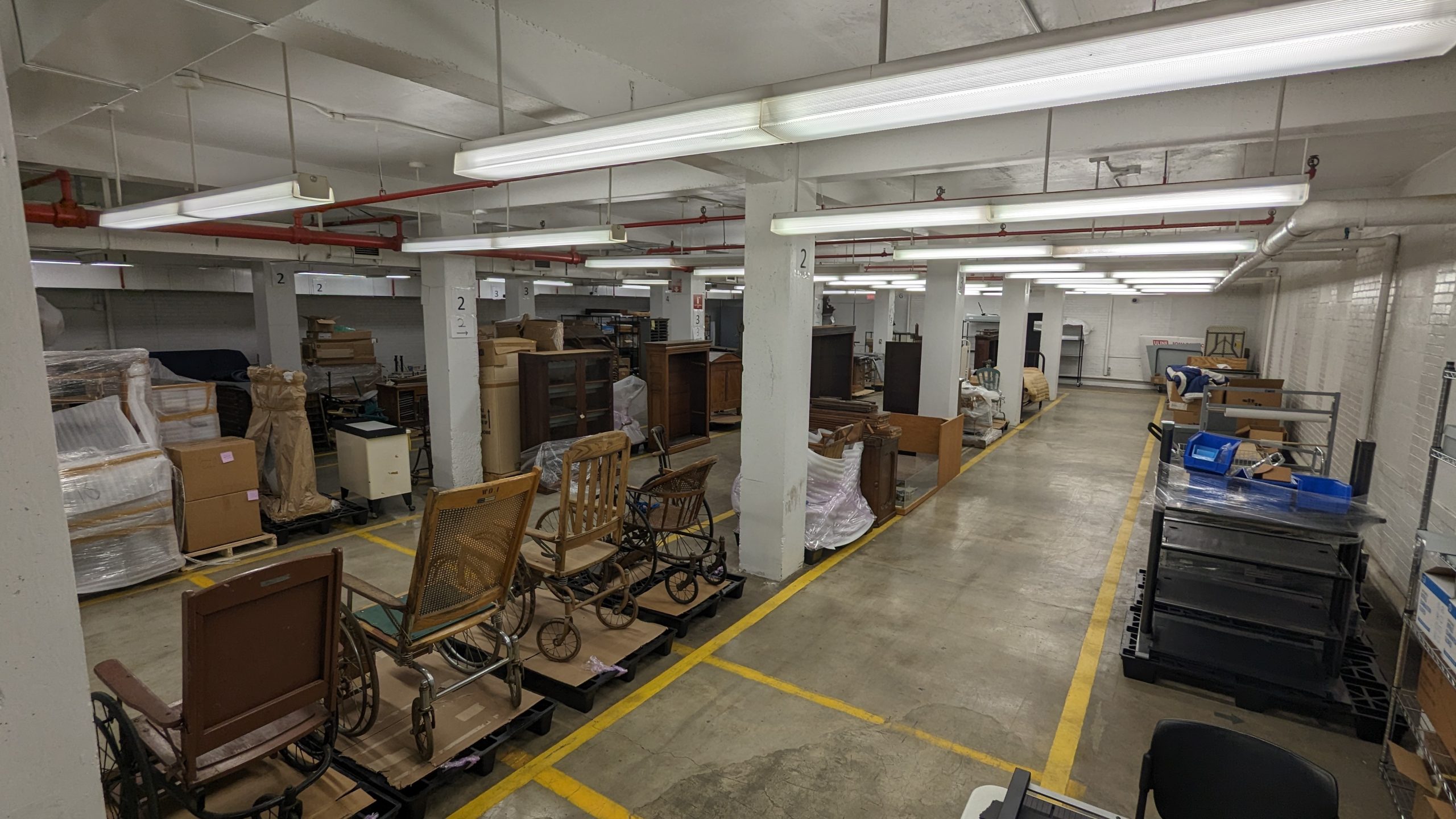Tracking down the story of two plaster presidents
Presidents George Washington and Abraham Lincoln are among the most easily recognizable figures in American history. Their faces are symbols of wisdom, strength, and leadership. Even today, polls consistently rank them as the greatest or most successful presidents. With that in mind, it is unsurprising that the appreciation of these legendary statesmen has deep historic roots. In honor of their birthdays, our team at the National VA History Center explored those roots through this pair of plaster busts.
These busts are located at the Dayton VA Medical Center in Dayton, Ohio. Over 150 years ago, this campus was home to the Central Branch of the National Home for Disabled Volunteer Soldiers (NHDVS) and housed thousands of Veterans from 1867 through the birth of the modern VA in 1930. As Collection Manager at the NVAHC, I was familiar with the bust of Lincoln on display in the lobby of the medical center. So when I unpacked a box in our new Collection Facility and found the plaster face of General Washington staring back at me, I knew they must be connected.
All research starts with good questions. My research usually starts with questions like “What is this object, when was it made, and how does it fit into the story of VA?” In the case of these two busts, their place in the history of VA turned out to be the easy part to find. Who made them and when they were made? Not so much. Luckily, our team of historians, archivists, and curators at the NVAHC have many sources that help us piece together the clues of the past.
Using these sources, I was able to match an illustration from Gobrecht’s History of the National Home for Disabled Volunteer Soldiers (1875) to a photo from the old Putnam Library. It confirms that yes, the busts in the photo are the same busts of Washington and Lincoln that we still had today! This photo was undated, but we know that it must have been taken before the Putnam Library moved to its new location in 1890. We also have photos of the busts in several locations inside the new Putnam Library, which operated until 2003. These photos tell us that the busts were at the Home Library from its very earliest days right into the 21st century. Imagine how many Veterans looked up at these sculptures through the years, and what inspiration they took from them.
During my research, I found that the bust of Abe Lincoln is a plaster cast of an original bust sculpted by Thomas D. Jones. The recently elected Lincoln personally modeled for the bust prior to his inauguration in 1861. Jones created several versions of this bust made in plaster, marble, and bronze. A nearly identical bust is in the Indiana Statehouse in Indianapolis. A marble version was used for the Vicksburg Monument, unveiled in the Ohio Statehouse in January of 1871, just months before the opening of the old Putnam Library in Dayton. So, if Thomas Jones sculpted Lincoln…who sculpted George?
Unlike Lincoln, the Washington bust has an inscription on the back. The writing has faded over the years, but it could possibly be the signature of the artist who made the bust. If it could be read, further research can be done about the person who made this bust and how it may have ended up in Putnam Library nearly 150 years ago. I realized this was a chance to use some of the technology available to us in our imaging lab, so I spoke with Dustin, the Digital Asset and Museum Imaging Specialist on our team here in Dayton. He operates the DC Titan, a high-tech camera setup that takes photos using different wavelengths of light, which can reveal writing or images that have faded with age.
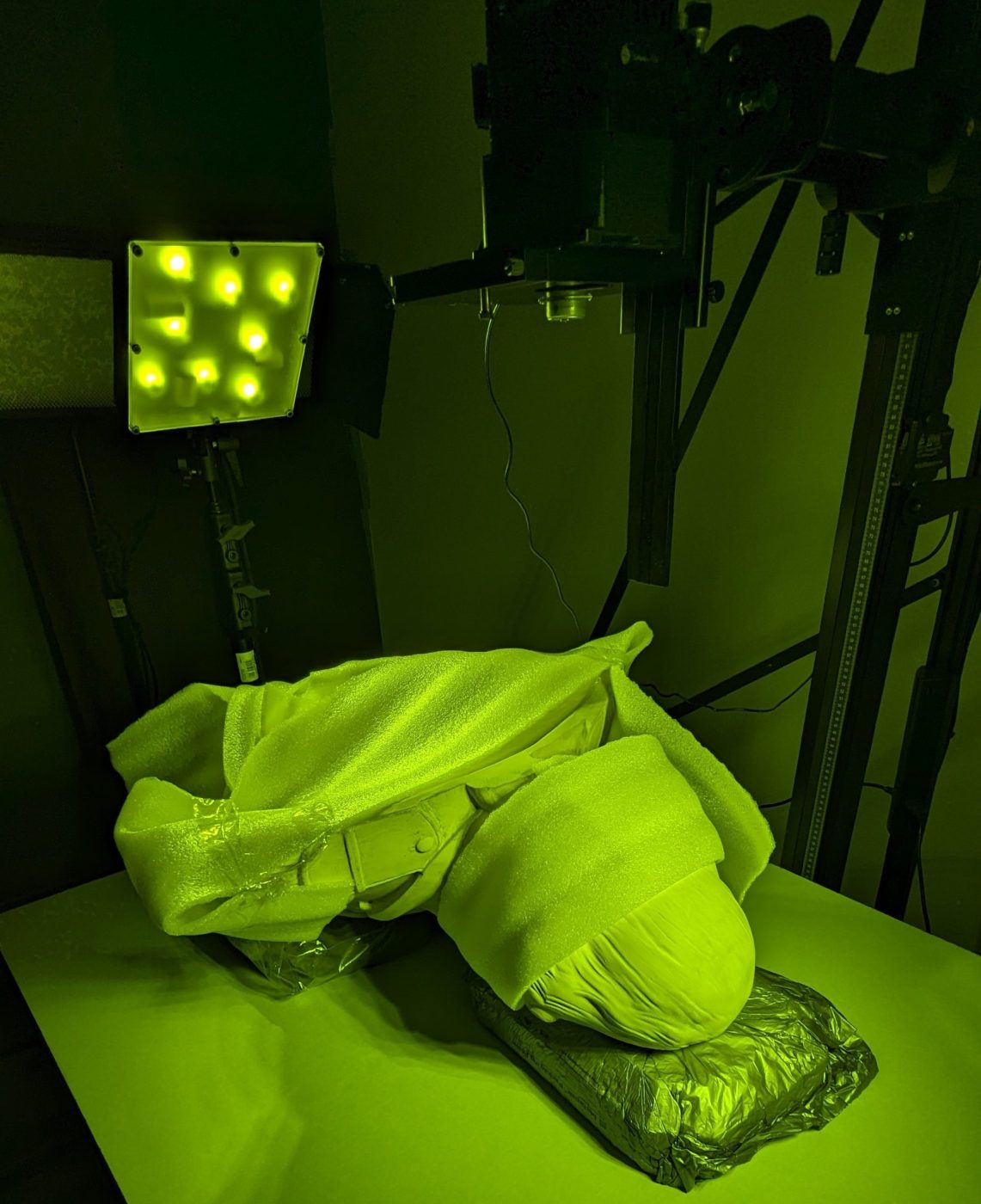
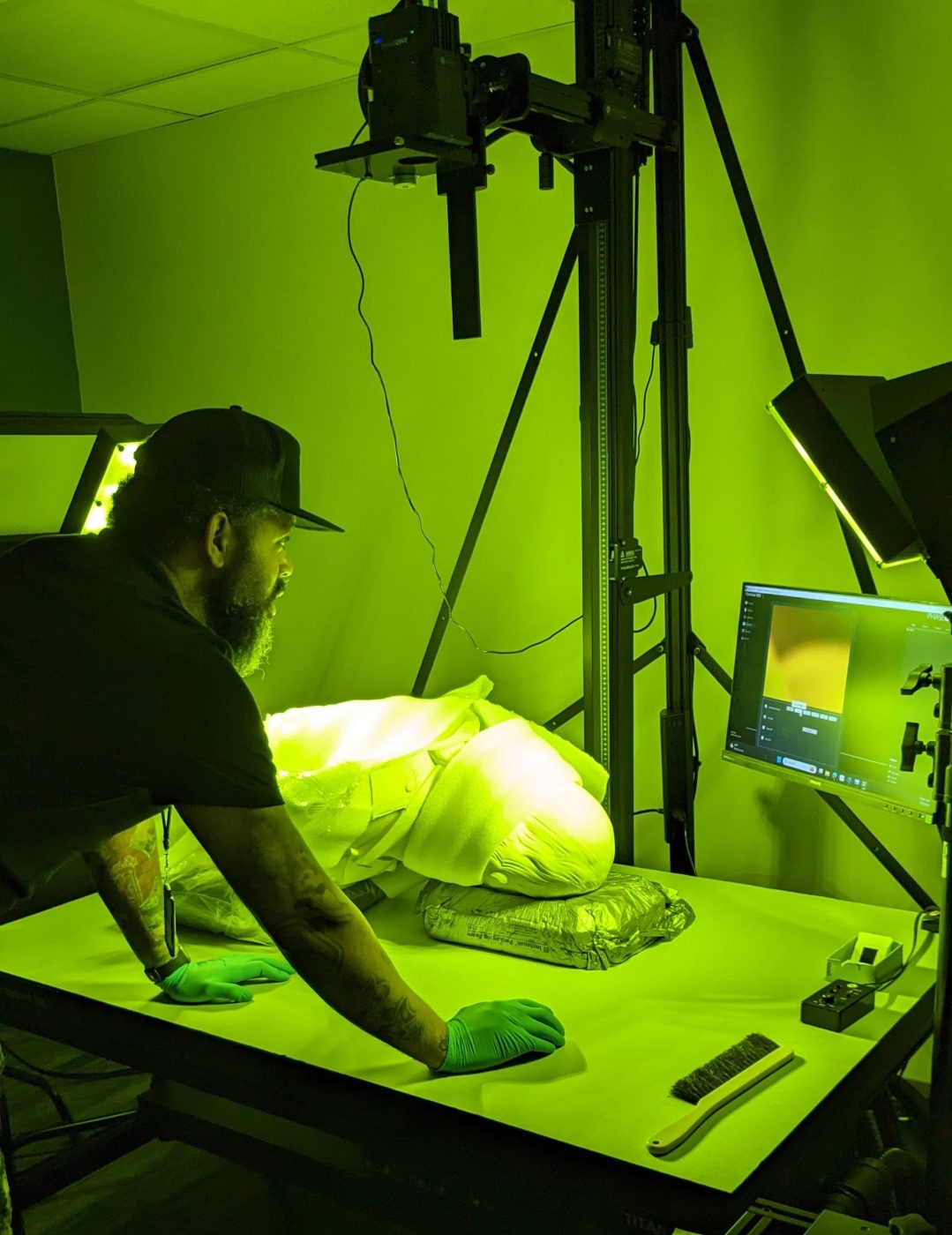
For the President’s safety, he was wrapped in Ethafoam and transported to the lab on a rolling cart. In the lab, the bust was placed on the imaging table and Dustin got to work. He configured the camera and light systems to capture nearly 30 images of the bust, and it made certain letters really stand out!
Even with the most cutting-edge technology, it remains unclear what exactly the inscription says. Sometimes historical mysteries take a little more time and research before they can be solved, but that’s all part of the fun! What about you? Can you make out the name on the mysterious bust of Washington?
Until next time, Happy Presidents Day from the NVAHC.
By Gage Huey
Museum Collections Manager, National VA History Center
Share this story
Related Stories
Curator Corner
It isn’t often that researchers who work with historic objects get to know the people who used those objects every day. Sometimes we get lucky and can link artifacts to certain facilities or buildings on a historic VA campus, but usually we must look for more hidden lines of evidence to figure out how an object fits into the history of those who care for our Nation’s Veterans. As nice as it would be, it isn’t as if many artifacts turn up labeled with their owners’ names! So, imagine my surprise when my teammates and I began sweeping Putnam Library for any historic objects left behind before the building is closed for renovation, and found just that.
As far as artifacts go, its story seemed simple: book presses like these would have been used to help maintain and repair the thousands of books read in Putnam Library ever since it first opened in 1879. The day that I first got up close and personal with the press, I noticed a woman’s name scraped into the black paint of the platen (the technical name for the big metal plate used to hold books together). It said “Helen Carson” in big, legible letters. As we carefully transported the heavy press down the many stairs inside Putnam Library, I looked at the name and thought “Hm…wonder who that is?”.
Curator Corner
Mary Lowell Putnam is tied to VA history by her generous donation of a large volume of books to the Central Branch of the National Home for Disabled Volunteer Soldiers. These books, meant to honor her son who died in the Civil War, helped foster reading advancement for the Veterans who lived there after the war and into the 20th Century. However, her life was more than just a moment in time donating books. It included a life-long study of languages and a very sharp opinion that she shared in writing throughout her life.
Curator Corner
After the flood from a burst pipe in the winter of 2023 damaged the temporary storage site for the National VA History Center collection and archives, the move to a new home was ramped up. Conducted earlier than expected, moving everything took massive amounts of coordination and elbow grease to get thousands of pounds of artifacts, equipment, and historical records to Building 126 on the Dayton, Ohio VA campus.


